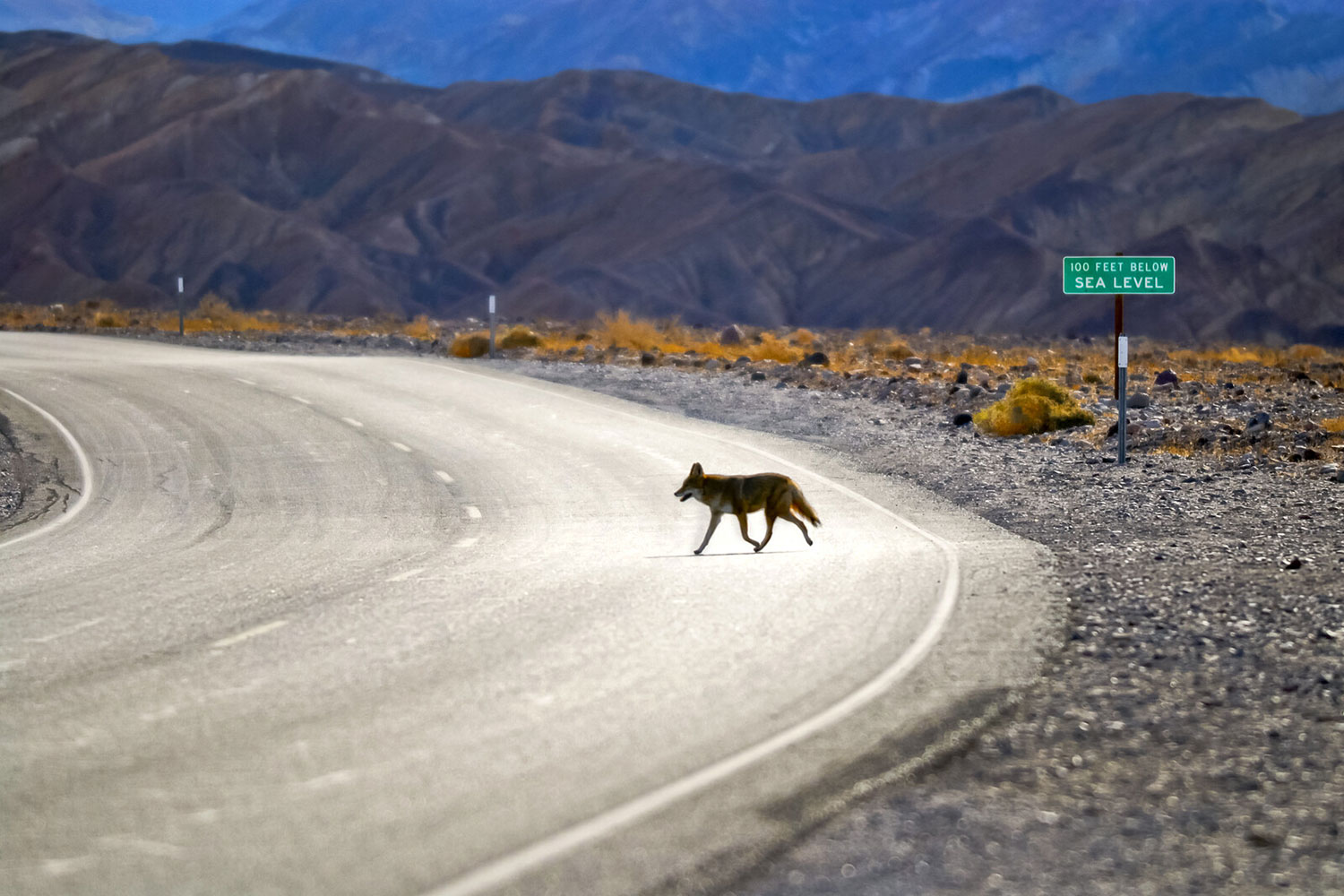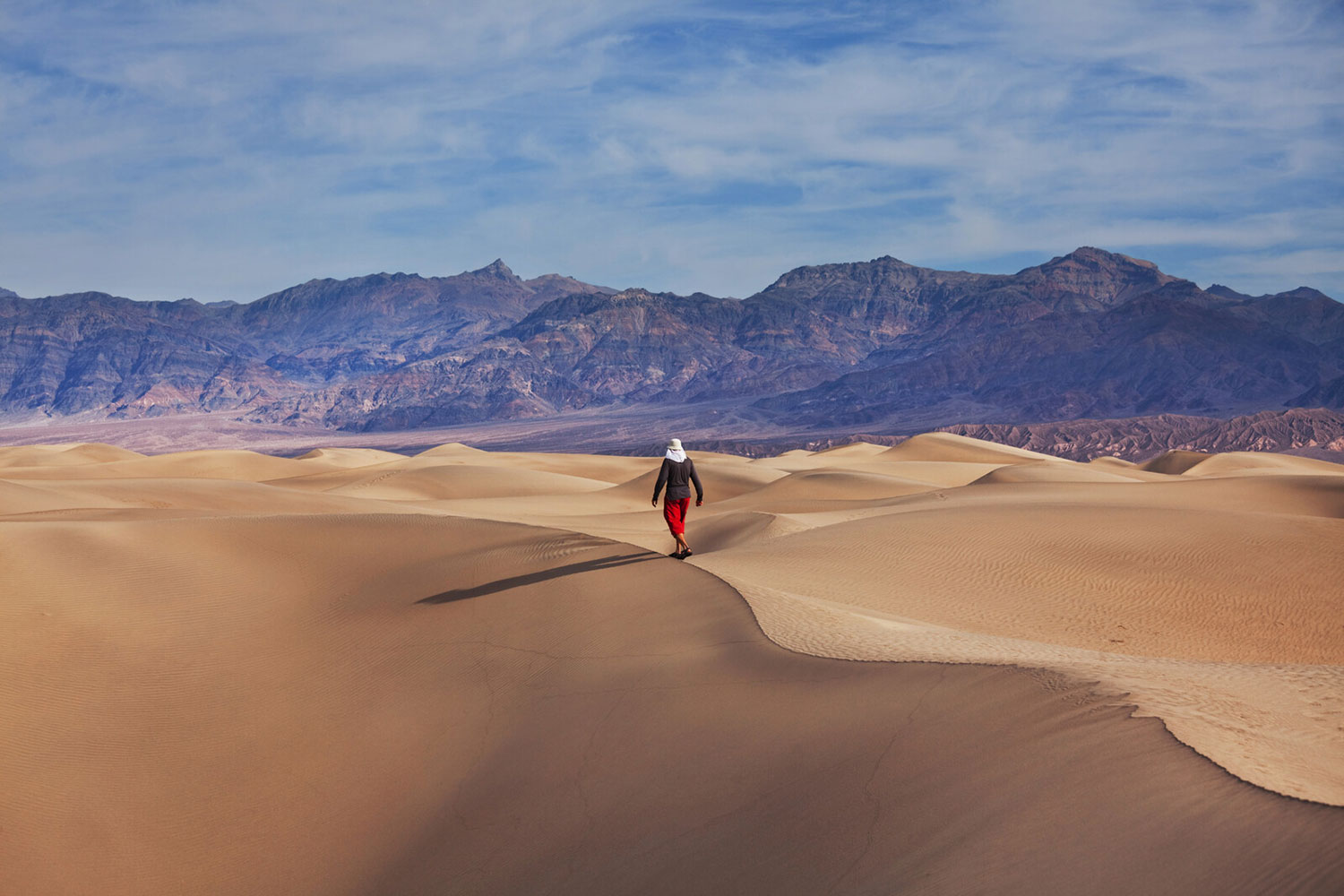Table of contents
Death Valley National Park is a magnificent place, home to many magnificent rock monuments. I’ve put together a guide for you to explore these unique places during your stay in the United States of America.
About the park
Death Valley National Park is the largest national park in the United States of America, covering 13,628 km². It spans the states of California and Nevada. The park’s largest community is Furnace Creek. It’s a park with many rocky panoramas, dunes and mineral sights.

© Can Stock Photo / kwiktor
How to get to Death Valley National Park ?
Find out how to get to Death Valley National Park from three major U.S. cities: San Francisco, Los Angeles and Las Vegas.
From San Francisco
To get to Death Valley National Park from San Francisco, you’ll need to drive 500 miles (800 km) in about 9 hours. If you’re planning to drive to Death Valley National Park, do so as part of a road trip.
From Los Angeles
From the City of Angels, it will take you approximately 4 h 45 min to drive to Death Valley National Park. The drive is approximately 289 miles (462 km). Alternatively, fly to Las Vegas (1 hr 15 min flight) and rent a car.
From Las Vegas
To reach Furnace Creek from Las Vegas, you’ll need to drive approximately 130 miles (208 km). If you choose to drive, you’ll need to take Routes 95 and 190. You’ll pass by Dante’s View, a must-see vantage point from which you can contemplate part of the Black Mountains range.
Entrance fees of Death Valley
Admission to Death Valley National Park is $30 per car or $25 per motorcycle. The America the Beautiful pass is accepted, as the park is managed by the National Park Service (NPS), which also offers a very good smartphone application. This pass allows you to visit several NPS-managed sites over a set period of time. So, if you’re planning to visit Yosemite National Park, Grand Canyon Park, Sequoia & Kings Canyon National Park, etc., I recommend this pass, which is very interesting.
Time to plan your visit
If you want to cover all the points of interest in Death Valley National Park, you’ll need about two or three days. You’ll need a vehicle that can cope with very hot weather. Preferably a 4 x 4.
Sightseeing in Death Valley
Furnace Creek
The town of Furnace Creek is a veritable oasis in the desert. Don’t hesitate to visit the Visitor Centor, where you’ll find all the information you need for your trip. Park rangers are on hand to answer all your questions.
The town boasts a number of hotels, boutiques and campgrounds to accommodate you during your stay in the area. The local curiosity is the Borax Museum, housed in the oldest house in the park (1833). The museum tells the story of borax, a mineral used for industrial purposes. You’ll still have the opportunity to see some of the objects in use in the mines between the end of the XIXᵉ century and the beginning of the XXᵉ century. Admission is free.
Mesquite Sand Dunes
Mesquite Sand Dunes is one of the most beautiful vantage points in Death Valley National Park. Discover a true Martian landscape of rock monuments and dunes. This spot is particularly delicious at dusk or dawn for fantastic photos. The sand comes from the erosion of the surrounding mountains. It has been the scene of several film shoots. Star Wars Episode IV, for example, was shot on the sand planet Tatouine.
This walk is quite strenuous in summer, requiring you to cover around 3 kilometers under a blazing sun. So pack a hat, body-covering clothing, hiking boots and, above all, water.

© Can Stock Photo / kamchatka
Racetrack Playa
Want to discover a dry lake with shifting rocks? Set course for Racetrack Playa. The area used to be known for a strange phenomenon: rocks that moved on their own, leaving tracks in the sand. The mysterious phenomenon was explained in 2014 and involves a variety of geological and meteorological factors.
It’s essential to hire a 4 x 4 to get to this magical place, which offers unforgettable photo opportunities.
Ubehebe Crater
Discover a volcanic crater 237 metres deep and 800 metres in diameter in the Cottonwood Mountains. Thousands of years old, this crater was formed when magma came into contact with underground water tables, giving rise to violent explosive phenomena.
A magnificent lunar landscape awaits you. Plan to visit early in the morning, to avoid being overwhelmed by the heat.
Titus Canyon
Climb aboard your 4 x 4 and drive through breathtaking desert landscapes on the Titus Canyon ride. The unpaved, one-way trail stretches for 27 miles, or around 40 km. It ends at Scotty’s Castle Road, a hacienda with a fascinating past. It will take you approximately 3 hours to contemplate all the mineral wonders of this area.
Zabriskie Point
Located around 7 km from Furnace Creek, Zabriskie Point is a former borax mining site. Explore a splendid vantage point overlooking geological formations chiselled by erosion. Depending on the light of day, the colors will make the place even more magical.
Hiking
Several hikes in Death Valley National Park allow you to immerse yourself in sublime mineral nature. Make sure you have the right equipment: hiking boots, sun-protection clothing, hat, etc. Above all, bring plenty of water and an insulated water bottle. I suggest you explore the different hikes that will amaze you.
Golden Canyon and Red Cathedral
Ideal for moderate hikers, this trail is 4.8 km round trip. The trail takes you along a rocky corridor through Golden Canyon, with its sun-gilded rocks. It leads to the Red Cathedral, a stunning rock formation that owes its glowing color to the oxidation of minerals.
Gower Gulch Loop
For a more challenging walk, opt for the Gower Gulch Loop. Allow 3 hours to cover the 7 km loop. It’s an extension of the Golden Canyon hike. The most astonishing point of interest is probably the 7-meter-high dry waterfalls.
Artist’s Palette
For the more experienced hiker, discover Artist’s Palette, a 14.4 km hike through hills that offer a festival of colors: the green of mica, the purple of manganese, the red, yellow and pink of iron salts. It’s not for nothing that this area has been dubbed the “Artists’ Palette”.
Darwin Falls
Darwin Falls is certainly the jewel in the crown of Death Valley National Park. It’s a veritable oasis: greenery, waterfalls and a refreshing body of water. The walk is fairly easy, covering 3.2 km round trip. It takes you past several chirping streams.
Where to stay in Death Valley?
Within the park, you’ll find just three hotels:
- One at Stovepive Wells Villafe
- Two at Furnace Creek
It’s very important to book your accommodation at least six months in advance, as the supply of hotels far exceeds demand. For those on a budget, towns such as Beatty, Amargosa Valley and Shoshone offer accommodation outside Death Valley National Park. There are nine campsites within the park. But be sure to ask well in advance, as some sites close in summer due to the heat.
Weather and climate: when to visit Death Valley?
You can visit Death Valley National Park in both summer and winter. If you want to visit the national park in summer, it’s the ideal time to enjoy a night’s camping under the stars. There are some magnificent spots where you can sit and contemplate the starry sky without any light pollution. The various sites still offer sumptuous panoramas to admire sunrise and sunset.
In winter, plan to stay with a local or in a hotel. The weather can be cold and dry. However, this is the best season to explore the park’s trails without being bothered by the flow of hikers.
What to do around Death Valley ?
Around Death Valley National Park, there are many points of interest to marvel at.
Las Vegas
Just 2 hours from Death Valley National Park lies Las Vegas, the world-famous party town that offers a total immersion in certain aspects of American culture. Las Vegas never sleeps. Music, giant fountains, raucous restaurants, flamboyant casinos and more. Come and discover a city that’s a U.S. landmark in its own right.
Lone Pine
Two hours from Furnace Creek, discover Lone Pine. Diaz Lake was formed by an earthquake in 1872. A spring has sprung up and a jade-colored lake welcomes hikers. But the best place to explore is at Mobius Arch, an arch shaped by wind and erosion.
Big Pine
If you want to continue your road trip to greener pastures, set course for Big Pine, California. The town is located 2 h 20 from Beatty, which borders Death Valley National Park. Big Pine isn’t much to look at, but the surrounding countryside is sublime. Just think of the twenty or so turquoise lakes formed by the Palisade Glacier.
